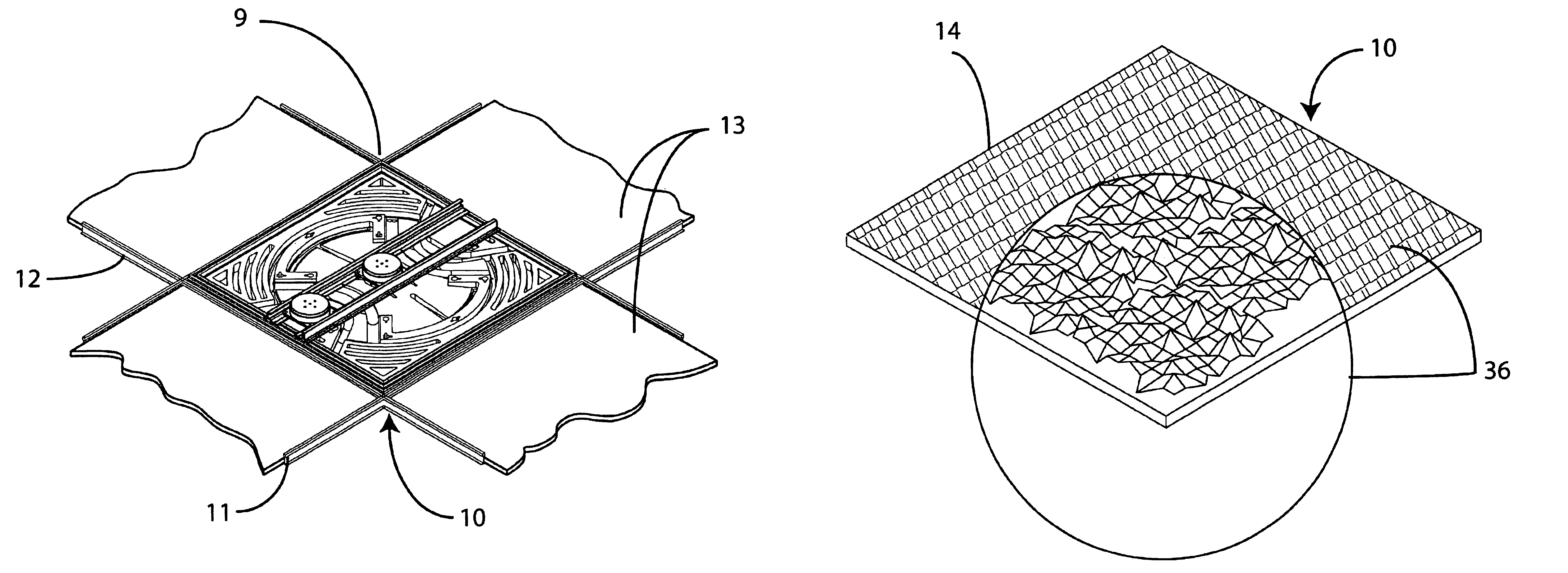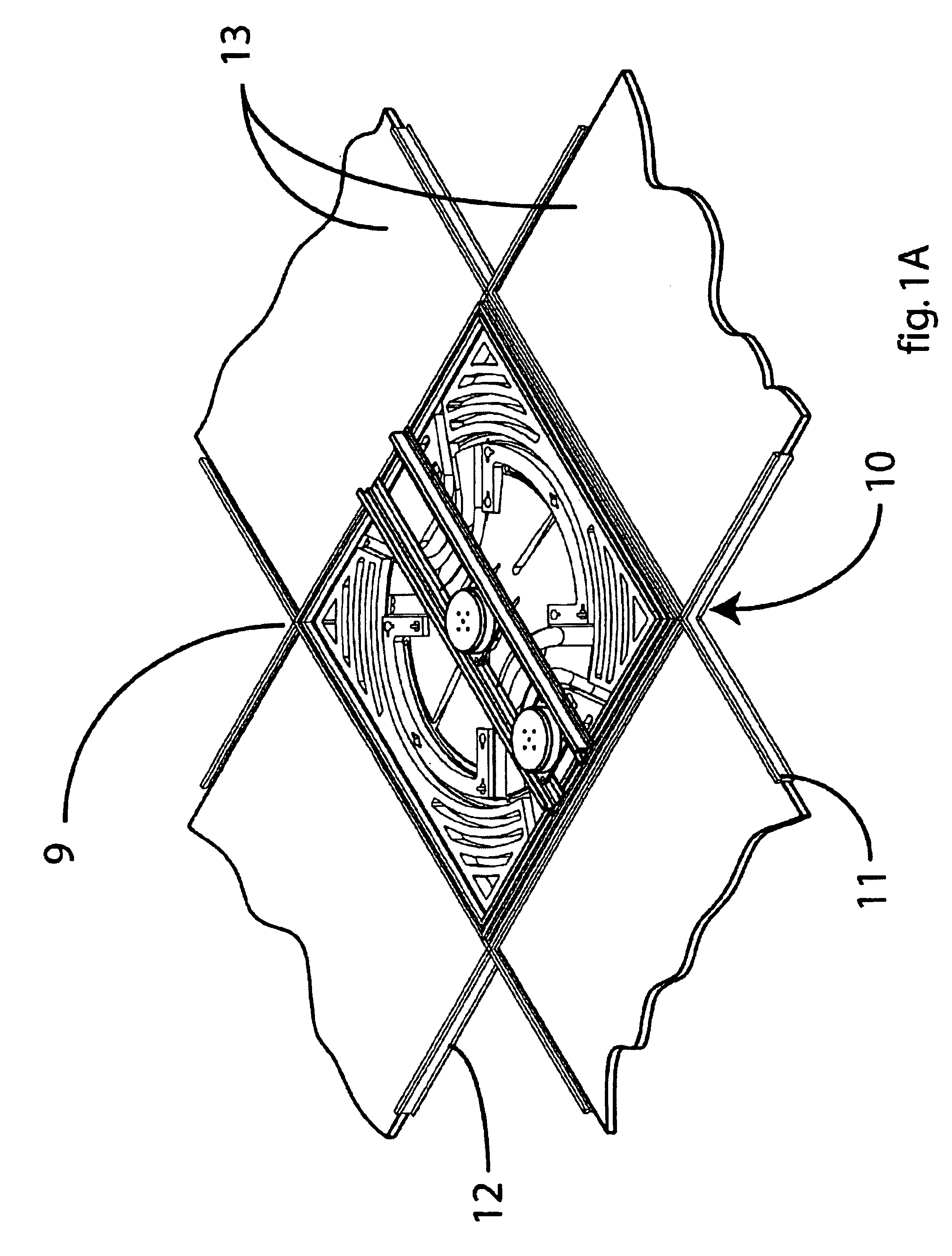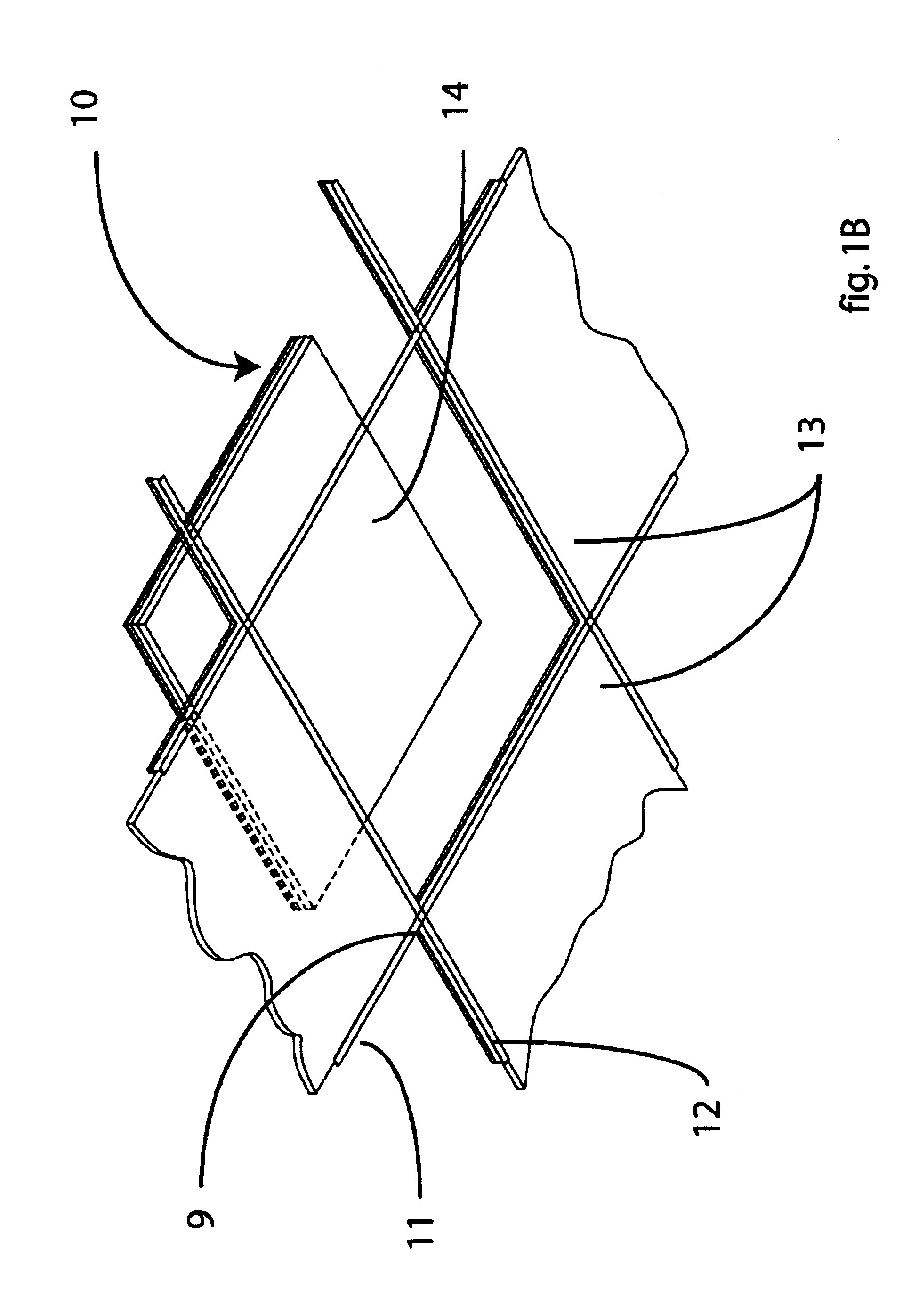Planar diaphragm loudspeaker and related methods
a loudspeaker and diaphragm technology, applied in the direction of transducer diaphragms, electrical apparatus casings/cabinets/drawers, instruments, etc., can solve the problems of narrowing the application of acoustically transparent fabrics, limiting the advantage of the product, and disrupting the continuity of the ceiling surfa
- Summary
- Abstract
- Description
- Claims
- Application Information
AI Technical Summary
Benefits of technology
Problems solved by technology
Method used
Image
Examples
Embodiment Construction
[0057]Referring now to the drawings, and more particularly to FIGS. 1A and 1B, there is shown a planar diaphragm loudspeaker, indicated generally by reference numeral 10, suitable for use in a suspended ceiling grid 9 that typically comprise a series of metallic runners 11 and tees 12 forming a 2′×2′ or 2′×4′ grid onto which multiple acoustic ceiling tiles 13 are placed. The loudspeaker 10 is shown in FIG. 1B with the exposed surface 14 facing down, and ready to be placed at an opening of the suspended ceiling grid.
[0058]FIG. 2A illustrates an exemplary arrangement of a dual-driver planar diaphragm loudspeaker 30 resting on runners 11 of a suspended ceiling grid 9, whereas an electromagnetic driver assembly 15 includes a voice coil assembly 17 arranged for reproduction of low frequencies and where an electromagnetic driver assembly 16 includes a voice coil assembly 18 arranged for reproduction of high frequencies, and where both voice coil assemblies 17 and 18 are coupled with epoxy...
PUM
 Login to View More
Login to View More Abstract
Description
Claims
Application Information
 Login to View More
Login to View More - R&D
- Intellectual Property
- Life Sciences
- Materials
- Tech Scout
- Unparalleled Data Quality
- Higher Quality Content
- 60% Fewer Hallucinations
Browse by: Latest US Patents, China's latest patents, Technical Efficacy Thesaurus, Application Domain, Technology Topic, Popular Technical Reports.
© 2025 PatSnap. All rights reserved.Legal|Privacy policy|Modern Slavery Act Transparency Statement|Sitemap|About US| Contact US: help@patsnap.com



